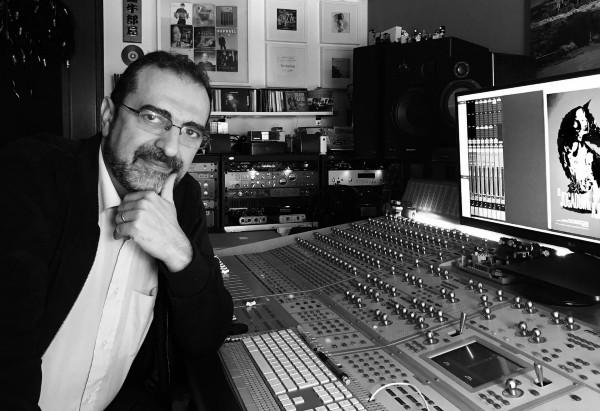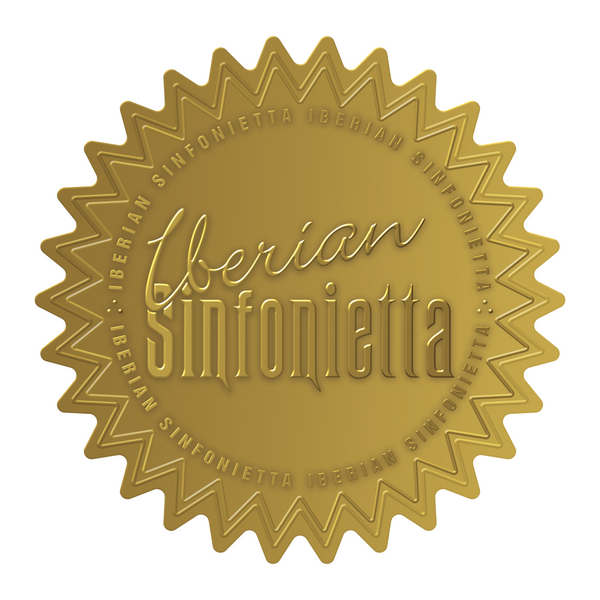
ON THE "INDÁLICO CONCERT" FOR ACCORDION, BY ALEJANDRO VIVAS PUIG

Dear audience:
The Concert next Saturday, March 13 at the Peace Palace in Fuengirola, the Iberian Sinfonietta and the very young accordionist Marta Cubas Hondal , under the direction of the principal conductor Juan Paulo Gómez , will perform this very special Accordion Concerto.
We say special because it is not common to find accordion concerts scheduled, which gives us a luxury opportunity to get to know this instrument in depth. Special because the composer Alejandro Vivas Puig , advised by other accordionists, took Martas Cubas Hondal herself into account for its composition, and finally special, because it is a very interesting Concert, we will demonstrate it below.
The composer, in previous interviews, expressed “ I have been fortunate to have the help of two great accordionists, Virginia Gutiérrez and María Ángeles del Pino, in addition to the great accordionist and composer Gorka Hermosa . From the first moment I conveyed to Marta my intention that it should be a concert written for her and with which she would feel comfortable.” As we see, the union between composer, performer and work is very close, which will undoubtedly transmit a very exclusive performance for the audience.
Regarding the Indálico Concerto , the author says that “ the Indálico Concerto for accordion takes us to Almería , through the “ Indalo ”, a cave figure from the late Neolithic that represents a human figure with outstretched arms and a bow over the hands that is has become a symbol of this Andalusian province. The timbre richness of the accordion has given me a lot of play so that, without being a purely descriptive work, this piece evokes sensations that are experienced in this ocher, luminous and unpredictable land in which sounds and silences form an essential part in the life of those who inhabit it. Almería is an arid and surprising land: you can find perpetual snow in the mountains and a deep desert in which countless films of all genres have been filmed and which, suddenly, looks like the moon, the Sahara desert, the Russian steppe or the American West. In this concert I wanted to capture all those things passed through the filter of my memories as a child.”
At this point, we must know the important relationship between this author and the world of cinema, something that can also be seen in his Indálico Concert . Alejandro Vivas Puig , from Almería, is a musician, composer and arranger. In addition to being a guitarist and composer , he is a psychologist from the Complutense University, but this solid training is joined by an affinity with the world of cinema . The composition of the soundtrack of the film La conjura de El Escorial (Antonio del Real, 2008) and that of The chess player (Luis Oliveros, 2017) stands out, whose music has been praised by critics and the audience, and has won awards. with a multitude of awards in national and foreign territory. He is also a member of the Royal Academy of Cinematographic Arts and Sciences of Spain. And of course, if there is a cinematic territory in Spain , it is Almería, the land of Indalo. There, films have been filmed from the 40s to the present, for example Lawrence of Arabia , Cleopatra , The Good, the Bad and the Ugly , Game of Thrones , Terminator , even Money Heist , in 2019. We tell all of them, because echoes of all this training and inspiration are perceived in this Accordion Concerto, Indálico Concerto .

Some technical notes
Normally, in this forum we do not delve into technical aspects , but on this occasion, and on the occasion of having before us an instrument so unusual to see in concert, we delve into the technical universe of the accordion, hoping that it can at least be of use to you. to contemplate the richness of the instrument and the diverse proposal that the composer makes for us.
The Indálico Concerto is made up of three movements titled: Pechina Puerto de Mar , Sueño Lunatic and Fuga del Alacrán . The work is composed respecting the constant sound balance between the orchestra and the solo instrument and, during its performance, the soloist is required at different times to develop some particularly striking sound effects thanks to the changes in register that must be made during the performance. In the review, regarding a performance of this Concerto on the day of its premiere, we could read “the constant textures, both of accompanied melody and contrapuntal polyphonies, were achieved thanks to the constant sound balance between both keyboards. To do this, the young accordionist made use of the free basses or also known Bassetti system in the left hand, avoiding the standard bass during her performance. In this way, he not only performed the work with a great sound balance between both keyboards, but also demonstrated great technical skill, since these basses are difficult to play. It was especially striking how he made the sound flow in the changes of bellows , without cuts, with total subtlety, but with determination, always respecting the musical phrases, the innumerable dynamics of the work and the very breathing of the music. A clear example of the magnificent use of the bellows could be enjoyed during the second movement, where the extension of the bellows was pushed to the limit to respect the beautiful opening theme, in a slow and very piano tempo. But he not only made neat use of the bellows in the usual changes of dynamics, but also demonstrated his mastery with accordion techniques that are very spectacular but are difficult to perform and even highly physically demanding.
Regarding the techniques that will delight the audience, we have vibrato , bellow shake, ricochet and bending. With the vibratro it is about achieving a vibrated sound, through multiple formulas, such as the movement of the fingers, the movement of a leg or the opposite hand. Vibrato appears constantly throughout the work, although it is more present in the first and second. The great physical demand of two bellows movement techniques, such as the bellow shake and the ricochet , is demonstrated in several moments of their performance, with the rapid and constant alternation of opening and closing of the bellows, to make repeated sounds at high speed. . In the second movement there are beautiful moments of these two striking bellows techniques. The third technique, known as bending, produces a half-step lowering of a note with a bellows technique coupled with button control. This effect can be perfectly observed at the beginning of the last movement, in the Fugue del alacrán, while the left hand will maintain a pedal note that enhances this sound effect. To all this we must add the innumerable virtuosic passages, which demand speed and skill, the complex rhythms between both hands, impossible arpeggios, polyphonic passages for several voices, a beautiful and complex fugue, etc."

We know that all this, as if that were not enough, will be interpreted from memory by Marta Cubas Hondal . Not to miss it.
Jorge Rodríguez Morata
Pedagogical content coordinator
